Posts Tagged: Jerusalem cricket
Meet Brennen Dyer of the Bohart Museum: An Award-Winning Entomologist
UC Davis entomology alumnus Brennen Thomas Dyer, a Bohart Museum of Entomology laboratory...
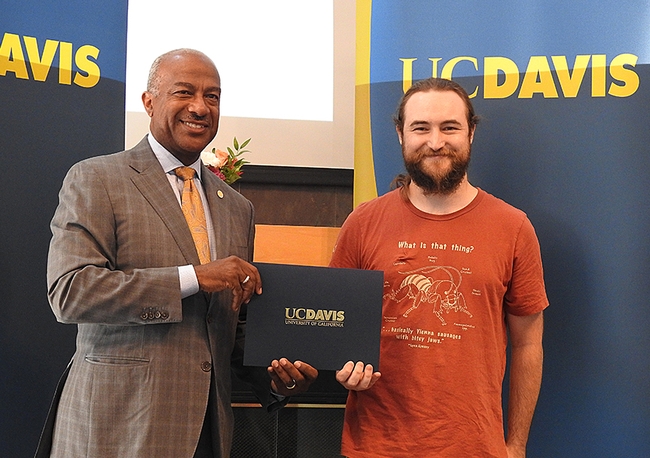
UC Davis entomologist Brennen Dyer, a lab assistant at the Bohart Museum of Entomology, with UC Davis Chancellor Gary May. (Photo by Kathy Keatley Garvey)
Potato Bug Lovers, Unite! A 'Vienna Sausage' T-Shirt!
It had to happen. With so many folks asking "What are those weird bugs?" and UC Davis...
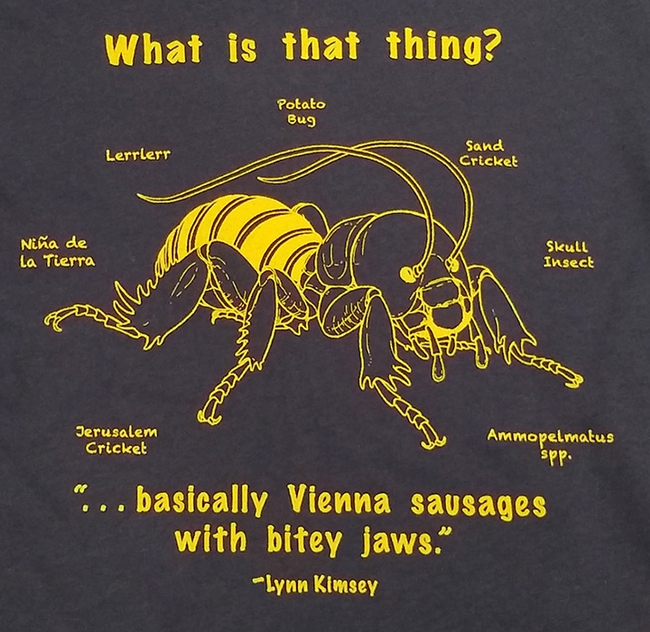
This is the Jerusalem cricket t-shirt by artist Allen Chew, a UC Davis student and Bohart volunteer, and designer Fran Keller, professor at Folsom Lake College. Keller, a Bohart Museum scientist, is a UC Davis doctoral alumnus.
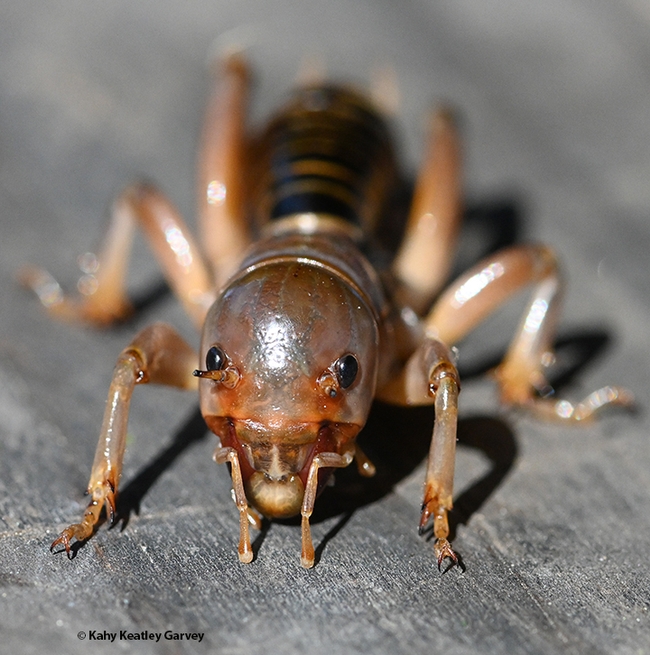
This Jerusalem cricket, aka potato bug, surfaced in April at the Doran Beach campground, Bodega Bay. (Photo by Kathy Keatley Garvey)
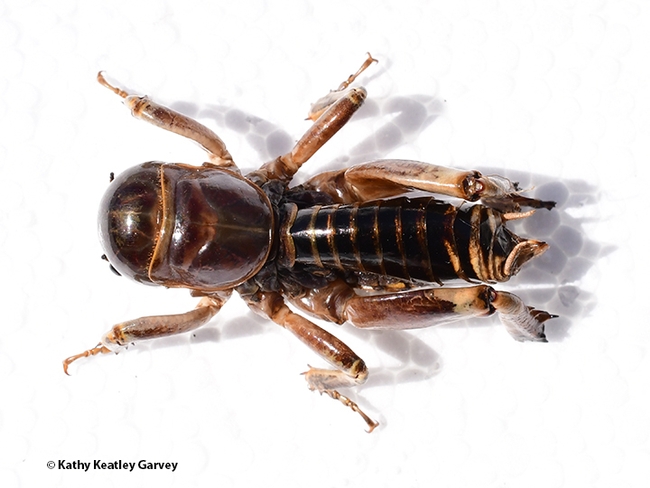
A dorsal view of the Jerusalem cricket, aka potato bug, spotted in April at the Doran Beach campground, Bodega Bay. (Photo by Kathy Keatley Garvey)
This Is NOT an Asian Giant Hornet
Nope, not an Asian giant hornet. Not even close. It's a Jerusalem cricket, sometimes called a...
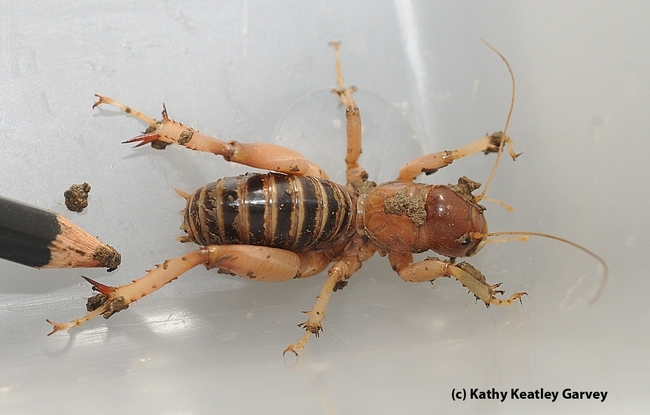
This is a Jerusalem cricket, commonly known as a "potato bug." Someone once described it as a "cricket on steroids." (Photo by Kathy Keatley Garvey)
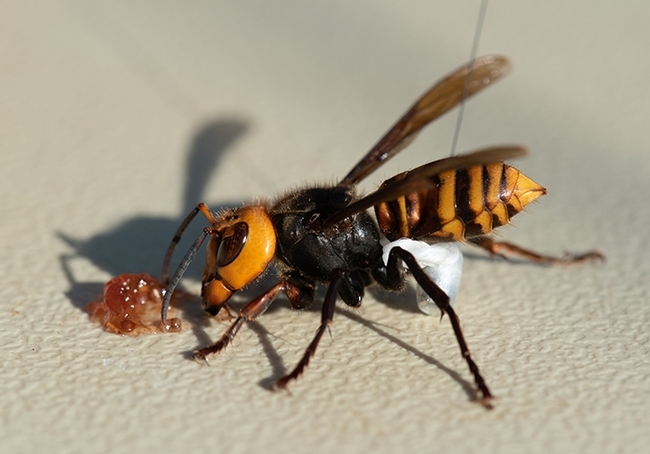
This is the Asian giant hornet. (Photo courtesy of the Washington State Department of Agriculture.)
Strange Little Insect
It's a strange little insect. A reader likens it to "a cricket on steroids." A Van Nuys resident...

A Jerusalem cricket. (Photo by Kathy Keatley Garvey)

Burrowing owls feed on Jerusalem crickets. (Photo by Kathy Keatley Garvey)
What's That Bug?
If you don't know what it is, don't kill it. That insect in your garden could very well be a...
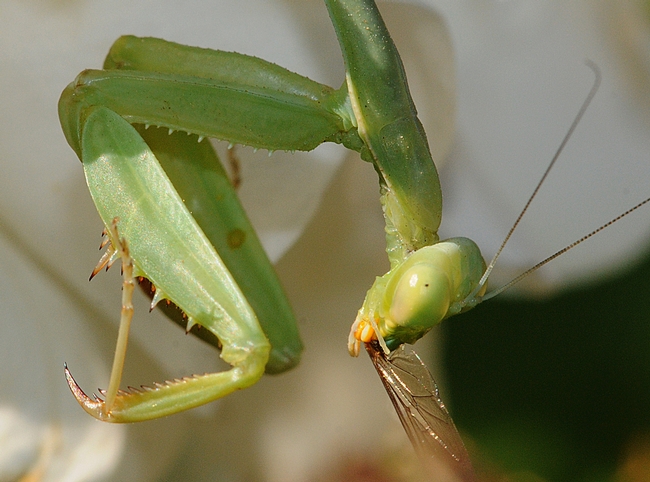
Praying mantis with remnants of a meal. (Photo by Kathy Keatley Garvey)

This is an immature ladybug (aka lady beetle). (Photo by Kathy Keatley Garvey)
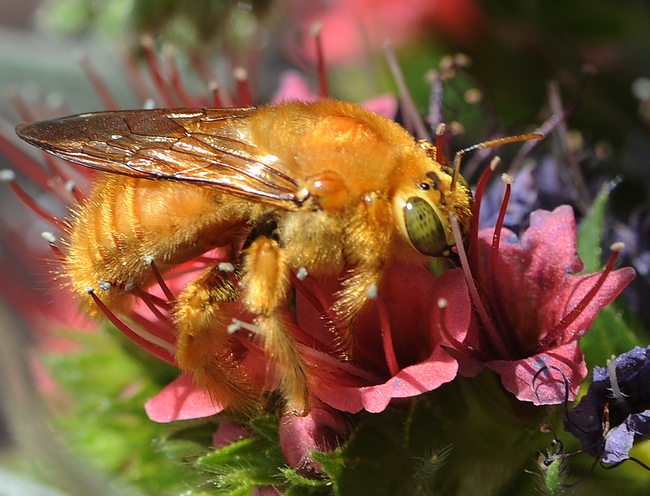
This male Valley carpenter bee is a pollinator, not a pest. The female Valley carpenter bee is solid black. (Photo by Kathy Keatley Garvey)
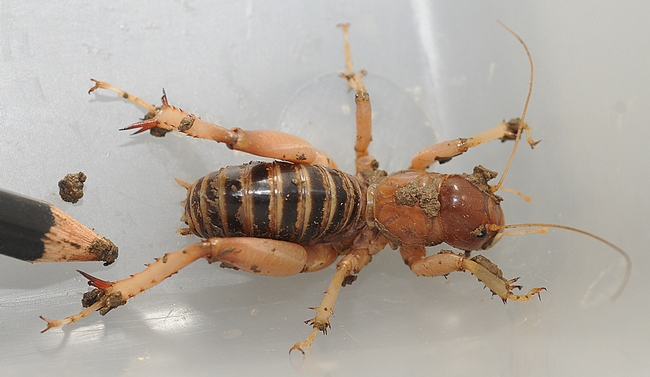
Jerusalem cricket is often mistaken for a pest. (Photo by Kathy Keatley Garvey)